One of the most complicated things for people in the hospitality industry is finding the right website design for restaurants. A great site combines aesthetic appeal with user experience. Building an online presence is essential for any business – but with fierce competition between restaurants, it’s vital.
According to Statista, there were 88,848 UK restaurants in 2018. With the number of mobile users also increasing, every restaurant should have an impactive website – but it isn’t easy to know where to start.
In this guide, we will discuss website design for restaurants and reveal what makes a great site.
What Makes a Great Restaurant Website?
Unfortunately, it’s common for restaurant websites to lack features that create a good experience for users. One reason for this is a lack of time, and the other is that restaurants often think they can let their food speak for itself.
The fact is, most people expect to see a website with strong navigational features, great content and extensive information about the menu, including calories per dish and where the ingredients are sourced from.
Suppose you want to create a website that demands attention and increases interest in your restaurant. In that case, it’s essential to remember that you should focus on providing the best user experience possible.
Let’s look at some must-have features and common mistakes people make with their website design for restaurants.
Who Are You?
Showing people who you are is your opportunity to define your restaurant. So why do so many get it wrong? Imagine how many restaurants there are in your locality. Then think about how many offer the same cuisine as you.
It’s so important to let people know what makes you unique. For example, do you cook with healthier ingredients? Are you a fusion restaurant? Do you have a meal deal option that people won’t be able to resist?
It would help if you also thought about your brand identity and logo. Will people notice you? Does your logo reflect your business?
Always keep your mission statement and basic information simple, but make sure people can get a good idea of the type of food you offer and your delivery information.
The Menu
The most crucial aspect of your website is the menu. It’s often the first place people will go to see the dishes you offer and how much they cost.
Some restaurants believe it’s better not to reveal too much because more people will want to visit the premises to sample your food. Please don’t follow their lead. A clear menu is essential for you to attract the right customers.
While some people are willing to spend £100 on a meal out, others want budget options. By displaying your prices, you can avoid misunderstandings and get a clear idea of how many paying customers you’re regularly attracting.
According to Rewards Network, 72% of restaurant searches are on a mobile device, so try to avoid PDF menus and use HTML format instead.
Reviews
You should always include reviews on your website and let people know what previous customers thought of the food and premises. It’s common practice to read reviews before making a purchase, so having no customer testimonials will worry people more than negative reviews.
The best thing about restaurants is using Google My Business, Yell and Trust Pilot to secure reviews from your customers. It’s also a great idea to ask people to leave a review on your website or connect it to Google.
Opening Times & Booking
Make sure you provide information on your opening times for both dine-in and delivery options. It’s great if you can implement a booking system on your website too. People don’t pick up the phone like they used to – because they don’t have to!
Today it’s all about online booking, mobile takeaway orders and little robots that carry delicious meals. Don’t get left behind!
Images
It would be best if you thought of your restaurant’s images similarly to your dating profile. You want to look good but should never offer unrealistic expectations.
For example, if you’re a fast-food restaurant that focuses on burgers and fries, you don’t want to use a Michelin star gourmet burger photo if that’s not what you serve.
Let people know what they’re getting, and they won’t be disappointed. You should always show your food in the best light, but make sure your chefs can deliver on people’s expectations.
Content
Your website is the face of your business – but the content is the heart. It’s the perfect opportunity to show your personality, and if you’re familiar with chain restaurants, you’ll notice they all have a noticeable tone of voice and branding.
A five-star gourmet restaurant will have more formal language than a casual pizza place, so it’s crucial to think about the customers you’d like to attract and provide relevant content that keeps your audience engaged.
5 Restaurant Websites We Love
The best way to get inspiration for your website design is to look at other restaurants. We’ve picked the following designs because they work for the brand and compel visitors to become paying customers.
The Fat Duck
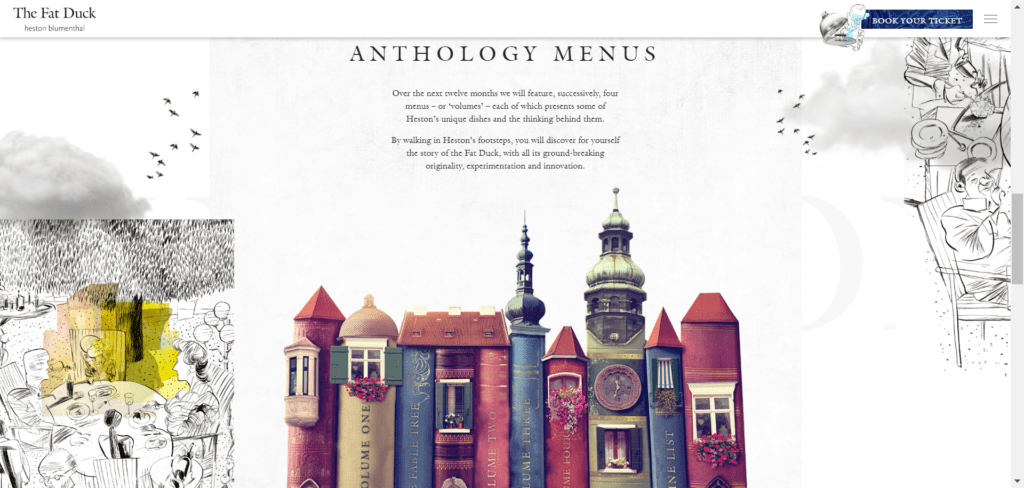
On the surface, The Fat Duck looks like a simple no-frills website. But the graphics that greet you on the home screen are mesmerising. Based in Berkshire, the Heston Blumenthal restaurant features Michelin star food and a fantastic atmosphere.
The website itself takes the concept of food and turns it into an almost magical experience that people will feel compelled to discover.
Mowgli
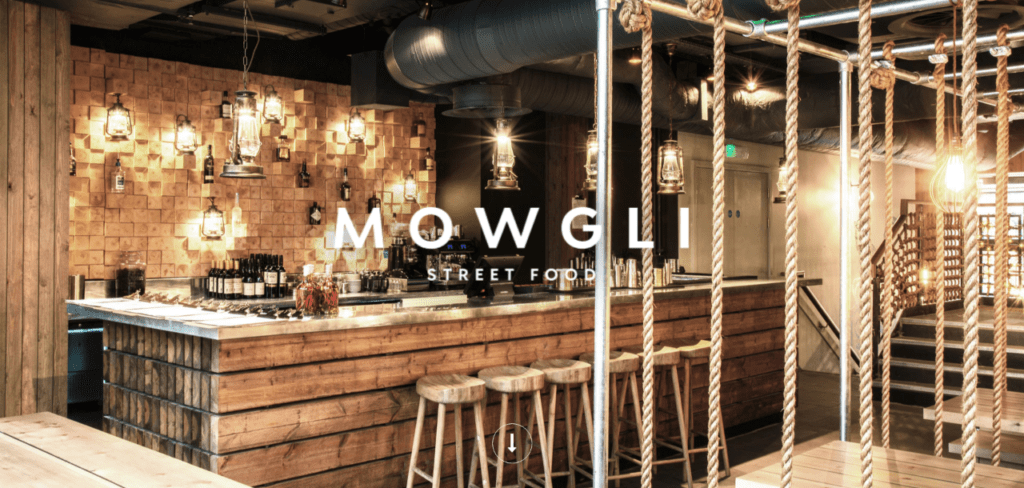
Mowgli is a street food restaurant that UK foodies are raving about. The homepage immediately makes it clear that the restaurant chain is more about great flavours than fine dining.
It also immediately stands out because the website mentions that most branches will allow dogs into the restaurant – which will be very exciting for pet lovers.
One area for improvement is the PDF menus, but because the design and content are so great, it’s not an issue.
The website also clarifies that charitable work is important to the company and displays how much money they’ve raised for local and regional charities.
Green Rebel
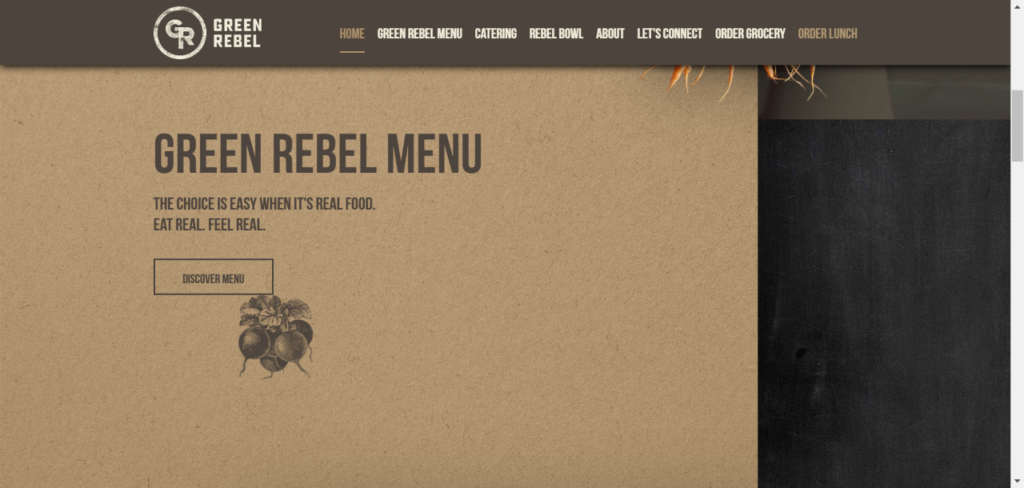
Canadian restaurant Green Rebel has some of the most on-point branding we’ve ever seen. They provide organic and vegetarian food, and as you can see from the website – it comes across so well.
The design is simplistic but powerful, and it immediately gives the impression of being environmentally friendly and suitable for vegetarians.
Better still, the easy to read menu features on the website – so it’s perfect for mobile users.
Overall we love Green Rebel’s simplistic design and think they’re the perfect example of less is more.
Crudo
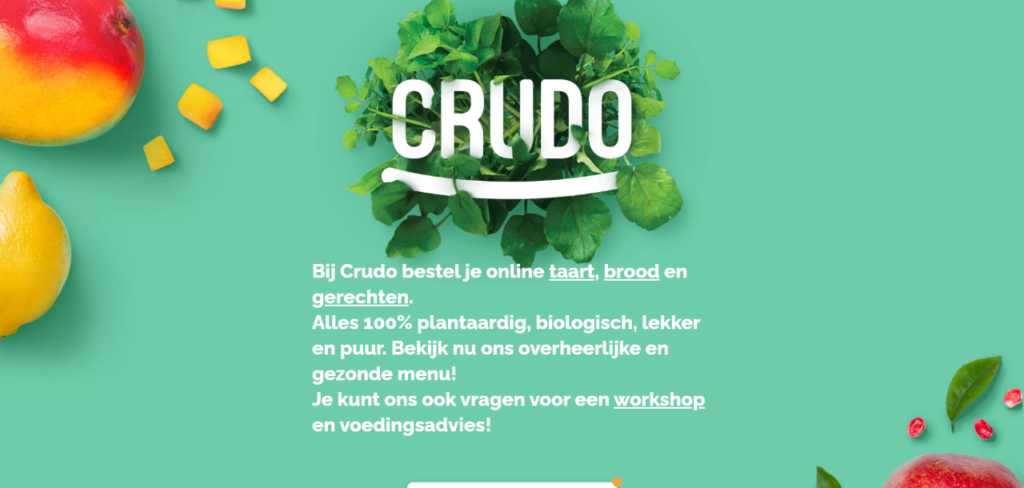
Based in the Netherlands, Crudo seriously bigs up plant power with its colourful website design. The site shows that sometimes it’s great to go against the grain and put yourself out there.
Most agencies recommend a basic colour palette, but Crudo’s burst of blue, mixed with fruits and vegetables, makes you feel immediately hungry.
The website itself is pretty basic, which balances out the colour while still providing the necessary information.
Moxhe
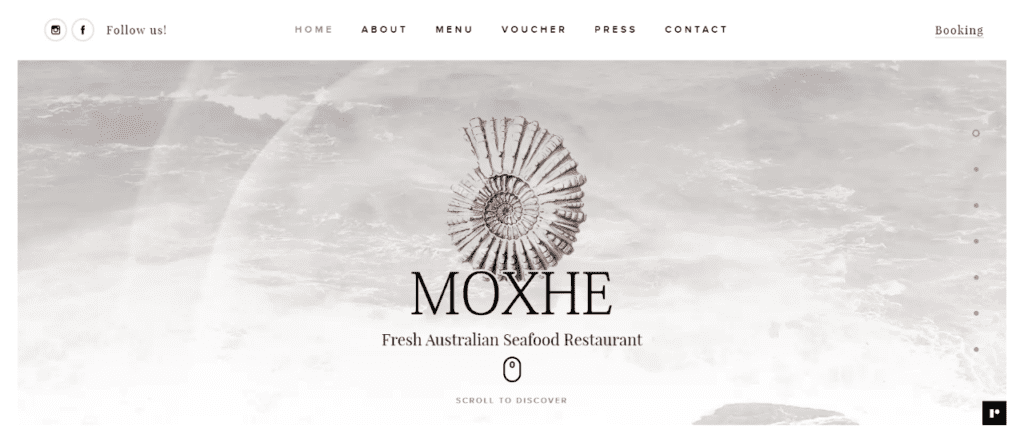
You know what you’re getting with Moxhe. The shell design on the homepage lets you know that the restaurant specialises in seafood, and waves crashing against the shore suggests everything they cook is fresh.
The classy yet simple design focuses on neutral colours, so each image stands out.
What’s particularly impressive is the reservation form that is easy to use and doesn’t overwhelm you with lots of steps and options.
Website Design For Restuarants: The Bottom Line
Restaurants offer so much more than delicious food. They’re a place for friends and family to gather and can also be a lifestyle statement. With veganism growing and more people discovering healthy eating practices, it’s important to fine-tune your brand identity and make sure it comes across well on your website.
One of the biggest mistakes we see people make is using DIY website builders. While they seem like a good idea, there are minimal customisable features which means it’s challenging to stand out against your competitors.
Zapp offers fully responsive website design for restaurants that are customisable to your preferences. Our unique platform enables businesses of all sizes to build, grow and scale with cost-effective packages to suit all.
Find out more here.


Recent Comments